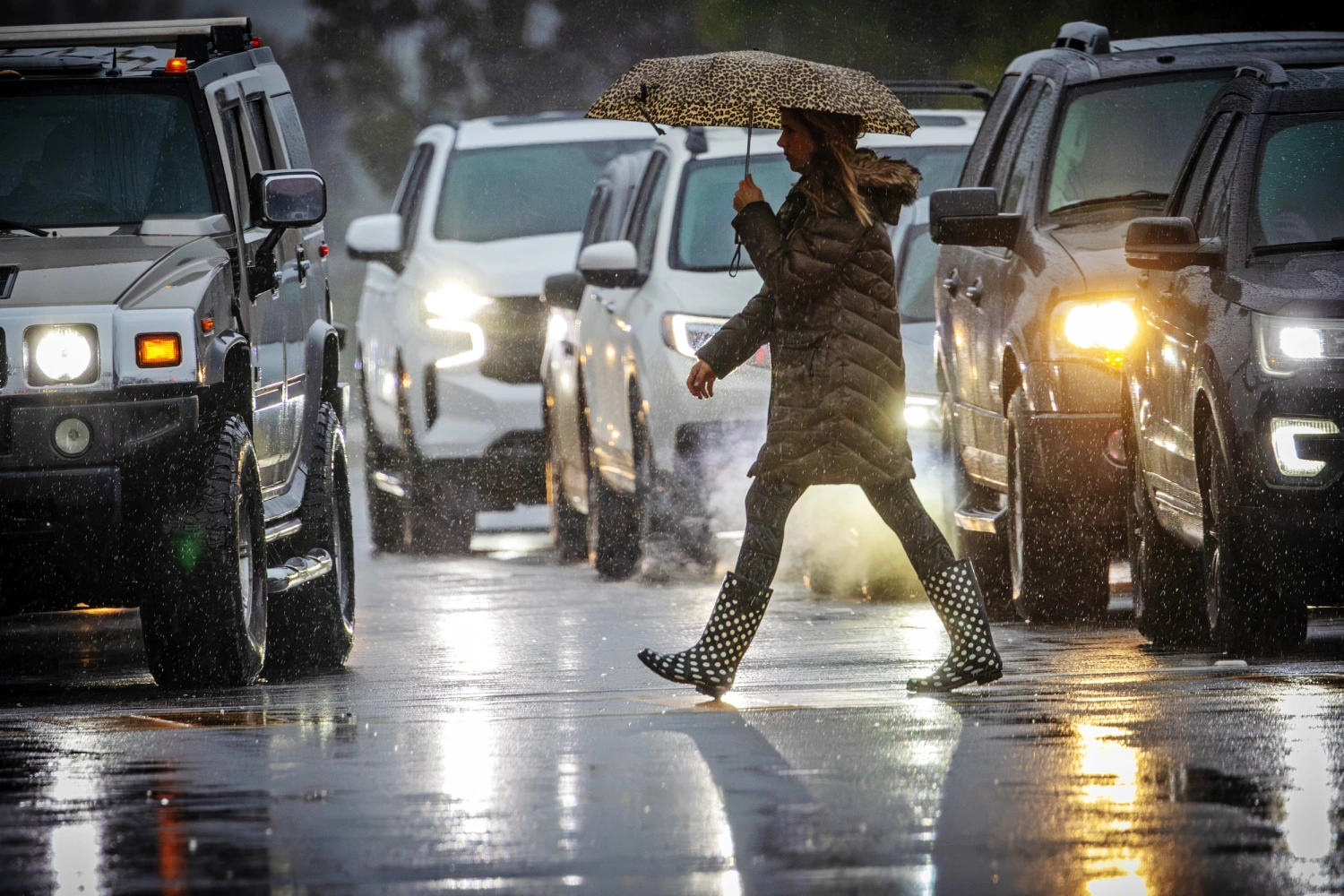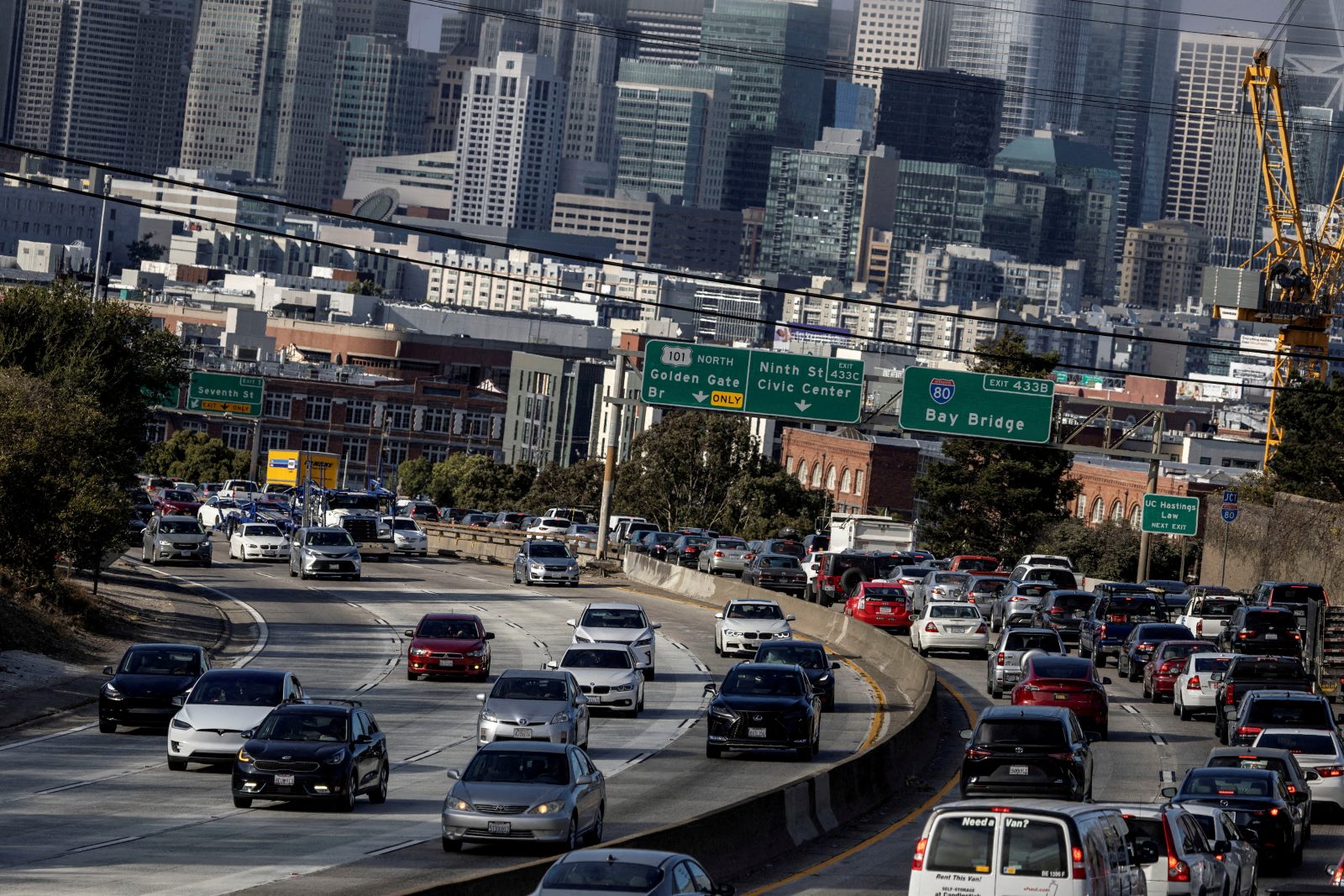The U.S. Department of Transportation proposed a new rule on Tuesday requiring all new vehicles to feature an upgraded version of automatic emergency braking (AEB) technology.
Currently, approximately 90 percent of light-duty vehicles are equipped with AEB as a standard feature.
However, the proposed rule aims to enhance this technology to ensure it can stop vehicles traveling at higher speeds and detect vulnerable road users, such as cyclists and pedestrians, even during nighttime.
The National Highway Traffic Safety Administration (NHTSA) is not proposing the use of a bicycle test device during the testing phase, which has raised concerns about the agency’s commitment to cyclist safety.
NHTSA mentioned it will continue to use bicycle and motorcycle “surrogates” in crash tests and expects to release its findings by the end of the year.
“AEB systems represent a significant advancement in saving lives and preventing accidents on our roads,” stated U.S. DOT Deputy Secretary Polly Trottenberg at a press conference on Wednesday.
“When implemented, AEB systems can potentially bring a vehicle to a complete stop or at least reduce its speed, thereby minimizing the impact damage.”
In 2015, most automakers voluntarily agreed to include AEB as a standard feature in new vehicles. The Insurance Institute for Highway Safety projects that AEB, which uses forward-facing cameras and sensors to automatically apply the brakes when a collision is imminent, could prevent 28,000 crashes and 12,000 injuries by 2025.
The new proposal by the Department of Transportation and NHTSA aims to make AEB mandatory in all new vehicles within four years of the rule’s enactment, going beyond previous voluntary commitments.
Currently, about 65 percent of new vehicles sold meet the government’s five-star safety rating, known as the New Car Assessment Program (NCAP), according to NHTSA’s chief counsel, Ann Carlson.

“The technology has matured enough for us to propose its mandatory inclusion in all vehicles,” Carlson noted, “but we are aiming to do much more than that.”
Under the proposed rule, AEB systems will need to be “much more effective at much higher speeds.” For instance, vehicles traveling up to 37 mph will need to come to a complete stop to avoid hitting pedestrians.
The systems will also need to detect pedestrians and cyclists at night, an area where many current systems fall short. The rule will also require “full collision avoidance,” meaning vehicles must stop without contacting the vehicle in front.
Carlson emphasized that the new tests are designed to be challenging to reduce collisions as much as possible.
Research indicates that current AEB systems are effective in preventing low-speed rear-end collisions but perform poorly at higher speeds and in certain scenarios like T-bone accidents or left-turn collisions, which make up around 40 percent of fatal crashes.
Many AEB systems also struggle with detecting children and are less effective at night.
With more than 70 percent of pedestrian fatalities occurring at night, improving detection in low-light conditions is critical. Carlson stated, “Our proposed rule will address this issue directly, potentially saving numerous lives.”
This announcement comes as pedestrian deaths remain alarmingly high. In the first half of 2022 alone, drivers in the U.S. struck and killed 3,434 pedestrians, a 5 percent increase from the same period the previous year, according to the Governors Highway Safety Association.
This rise follows a year that saw pedestrian deaths reach a 40-year high. NHTSA estimates that around 23,000 pedestrian injuries from 2016 to 2019 could have been avoided if this rule had been in effect.
While the stricter AEB testing may face resistance from the auto industry, Trottenberg expressed confidence in the sector’s ability to meet the new standards.
“We acknowledge this is a significant challenge for the industry, but much of this technology is already well-developed,” she said. “This is an opportunity to advance technology further, ensuring its broader deployment and higher standards across the automotive industry.”







Leave a Reply